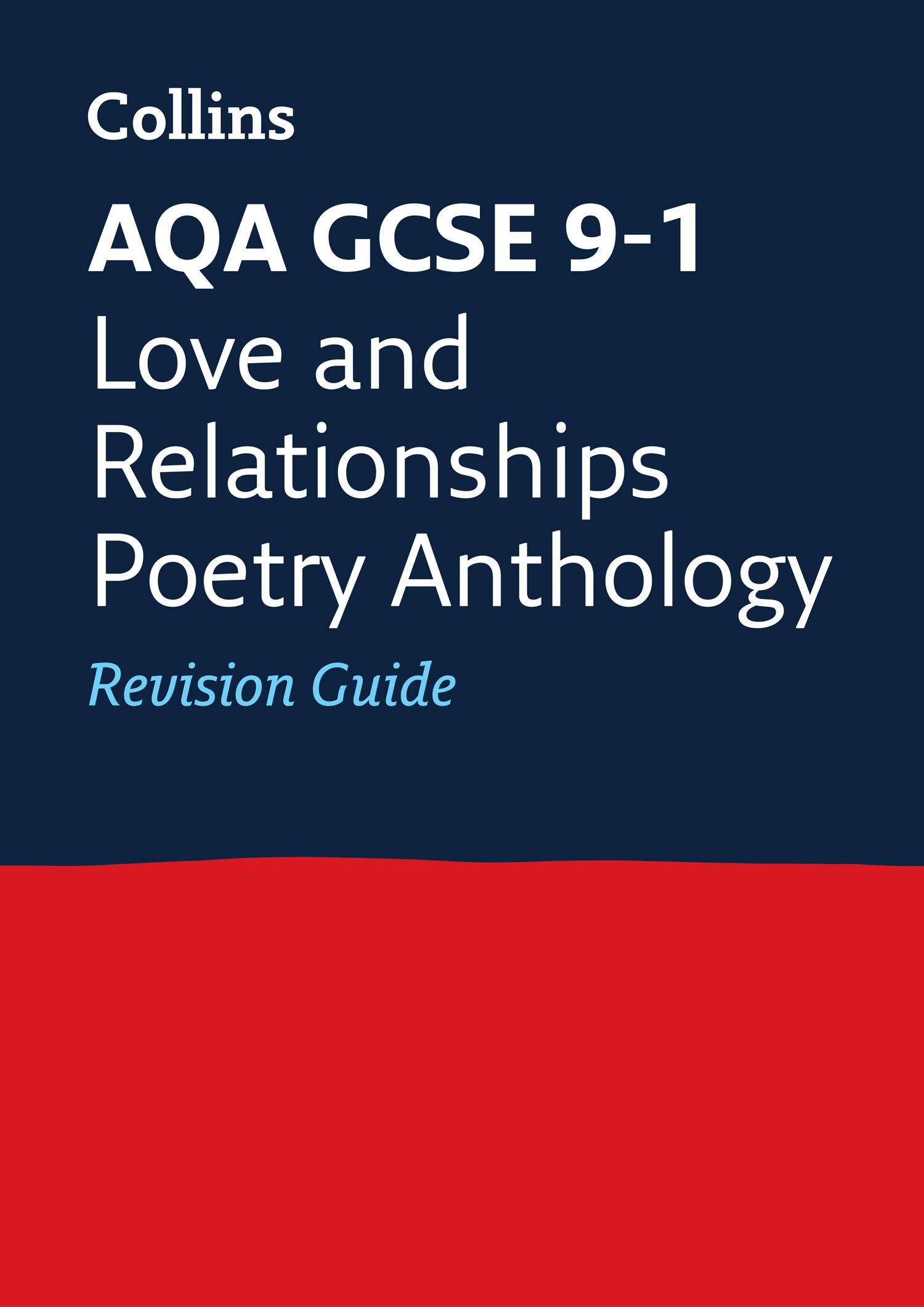
Revise
These pages provide a recap of everything you need to know for the poetry anthology section of the exam.
You should read through all the information before taking the Quick Test at the end. This will test whether you can recall the key points.
Practise
Quick Test
1. What is the weather like at the start of the poem?
2. How does the speaker say he killed Porphyria?
3. Porphyria is a girl’s name. What is another meaning of the word?
These poem-based questions appear shortly after the revision pages for each poem and will test whether you have understood the poem. If you get any of the questions wrong, make sure you read the correct answer carefully.
Review
These poem-based questions appear later in the book, allowing you to revisit each poem and test how well you have remembered it. If you get any of the questions wrong, make sure you read the correct answer carefully.
Mix it Up
These pages feature a mix of questions for all the different poems. The questions will test your skills writing exam-style answers comparing the poems.
Test Yourself on the Go
Visit our website at collins.co.uk/collinsGCSErevision and print off a set of flashcards. These pocket-sized cards feature questions and answers so that you can test yourself on the key points of the poems anytime and anywhere. You will also find lots more information about the advantages of spaced practice and how to plan for it.
To access the ebook revision guide visit www.collins.co.uk/ebooks and follow the step-by-step instructions.
ebook
3 Contents Contents Revise Practise Review
Overview of Poetry Anthology Cluster: Love and Relationships p. 4
When We Two Parted, Lord Byron p. 8 p. 18 p. 34 Love’s Philosophy, Percy Bysshe Shelley p. 10 p. 19 p. 35 Porphyria’s Lover, Robert Browning p. 12 p. 20 p. 36 Sonnet 29 – ‘I think of thee!’, Elizabeth Barrett Browning p. 15 p. 21 p. 37
Neutral Tones, Thomas Hardy p. 22 p. 30 p. 50 The Farmer’s Bride, Charlotte Mew p. 24 p. 31 p. 51 Walking Away, Cecil Day Lewis p. 26 p. 32 p. 52 Letters from Yorkshire, Maura Dooley p. 28 p. 33 p. 53
Overviews
Eden Rock, Charles Causley p. 38 p. 46 p. 65 Follower, Seamus Heaney p. 40 p. 47 p. 66 Mother, any distance, Simon Armitage p. 42 p. 48 p. 67 Before You Were Mine, Carol Ann Duffy p. 44 p. 49 p. 68 Poem Overviews
Winter Swans, Owen Sheers p. 54 p. 62 p. 69 Singh Song!, Daljit Nagra p. 56 p. 63 p. 70 Climbing My Grandfather, Andrew Waterhouse p. 59 p. 64 p. 71
Comparing Poems p. 72 Sample Worked Question and Answer p. 76 Mixed Exam-Style Questions p. 78 Answers p. 86 Glossary p. 95 Index p. 96
Cluster Overview
Poem Overviews 1
Poem Overviews 2
Poem
3
4
Poem Analysis
Cluster O ver view: Love and Relationships
O ver view of Poetr y Anthology Cluster: Love and Relationships
• The poems in the ‘Love and Relationships‘ cluster focus on the various aspects of love and relationships between people.
• Marriage and romantic love, and the social and cultural pressures that impact on love, are the focus of some poems, whilst others consider the strong bonds between parent and child.
• Some of the poems consider how relationships change over time, or how a relationship – or even one moment that crystallised an aspect of a relationship – can change our perceptions of ourselves and others for ever.
• The pain of love, possessive love and love as ‘letting go’ are also depicted, as are the themes of separation and desire in relationships.
• Certain poems highlight unconventional love, or look at how reconciliation may be possible when a relationship is failing.
Key Point
The poems in the ‘Love and Relationships’ cluster focus on different types of love and relationships between people.

AQA GCSE Anthology Revision Guide 4
Aspects of ‘Love and Relationships’ Painful love and separation Marriage and romantic love Unconventional love Parent and child relationships How relationships change over time
Approaching Older Poetr y
• Some of the poems, such as Sonnet 29 by Barrett Browning, When We Two Parted by Byron, Love’s Philosophy by Shelley and Porphyria’s Lover by Browning, were written in the 19th century. They may present attitudes towards love which seem very different to the way people think about relationships today. Other examples are Neutral Tones by Hardy and The Farmer’s Bride by Mew.
• Older poems also deal with ideas and concepts that are universal, and that speak to us across the years.
– In Love’s Philosophy, Shelley is trying to persuade a woman to be his lover;
– In Sonnet 29 the speaker thinks of ways she can be close to her lover, even when they are apart.
Relationships Flavoured by an Era
• Some poems in the cluster are from the 20th century and carry strong images of a particular time in evoking a relationship. In Before You Were Mine, Duffy captures the glamour of the late 1940s to the early 1950s, whilst Eden Rock provides a sharply detailed picture of life between World War 1 and World War 2.
A Focus on Complexities and Difficulties
• Several of the poems focus on the complexities of parent–child and family relationships.
– In Mother, any distance, Armitage talks about his relationship with his mother, as does Duffy in her poem Before You Were Mine.
– In Climbing My Grandfather, Waterhouse explores the relationship between a young child and his grandfather.
– In Follower, Heaney considers his feelings for his father as a young child and then later as an adult.
– In Walking Away, Day Lewis starts with a remembered moment with his young son and develops his thoughts on what parental love means.
Key Point
Understanding the context in which older poems were written can offer you a better understanding of their content.

Key Words
Cultural Perceptions
5 Cluster Overview
Revise
Cluster O ver view: Love and Relationships
Effec ts of Voice, Mood, Technique and Form
• The poems in the ‘Love and Relationships’ cluster encompass a great range of voices, moods, techniques and forms
– Singh Song! by Nagra and Porphyria’s Lover by Browning are both dramatic monologues, in which the poet employs a persona to speak to the listener. The speakers’ voices have very different tones. Nagra’s is playful and humorous, while Browning’s is somewhat cold and impersonal, almost forensic.
– Some of the poets use traditional poetic forms, for example a sonnet in Sonnet 29 by Barrett Browning, which enhances the theme of romantic love, and a disrupted ‘sonnet’ in Armitage’s Mother, any distance, which has the effect of adding to the poem’s theme of independence and freedom.
– Some poems, particularly those written in the 19th century such as Love’s Philosophy by Shelley, or Sonnet 29 by Barrett Browning, contain very ornate and flowery imagery, while others, such as Letters From Yorkshire by Dooley, use plainer, everyday language.
– While some poems are poignant (Eden Rock), bitter (Neutral Tones) or sombre (Winter Swans) in mood, others, for example Singh Song! and Love’s Philosophy, are exuberant and joyful adding to the persuasive power of the poets’ arguments.
• Pay close attention to the structure, language and form the poets use in their poems to add effect and meaning.
Utilising the Various Poems, Ideas and Themes
• In the exam you will need to make connections between poems, looking at similarities and differences in the content and how poets present their ideas about love and relationships.


• The following table is a short guide to the themes presented in the poems. It may be used as a starting point, but it is not exhaustive.
• All the poems in the cluster are multi-layered and are open to many interpretations that highlight different aspects of several themes. They should be read and considered as such.
Key Point
All the poems in the ‘Love and Relationships’ cluster can be interpreted in different ways.
Key Words
Voice
Mood Form
Dramatic
Persona
Sonnet
AQA GCSE
Guide 6
Anthology Revision
monologue
Poem Aspect(s) of Theme PresentedAdditional Comments including Method and Form
When We Two Parted – Love and loss
– Bitterness
Love’s Philosophy
Porphyria’s Lover
Sonnet 29 – ‘I think of thee!’
– Desire
– Persuasive lover
– Desire and possession
– Destructive love
– Passion and desire
Neutral Tones – Love and loss
– Bitterness
The Farmer’s Bride – Marriage
– Destructive love
– Formal structure, rhythm and rhyme
– Use of pathetic fallacy
– Romantic view of nature
– Dramatic monologue
– Traditional sonnet
– Love poem
– Nature corresponds to human feelings
– Formal structure
– First person monologue
– Natural imagery counterpoints society’s boundaries
Walking Away
Letters From Yorkshire
Eden Rock
Follower
Mother, any distance
Before You Were Mine
Winter Swans
Singh Song!
Climbing My Grandfather
– Love as ‘letting go’
– Parent and child relationship
– Long-distance relationship
– Autobiographical
– Child and parents
– Parent and child relationship
– Love as ‘letting go’
– Parent and child relationship
– Possessive love
– Parent and child relationship
– Reconciliation
– Power of nature in relationships
– Marriage
– Love as freedom
– Families
– Strength of love across generations
– Formal structure
– Use of natural imagery
– Use of contrast
– Free verse
– Present tense immediacy
– Significant details
– Precise rhythm and rhyme showing expertise
– Type of ‘sonnet’ going into free verse
– Sensory details
– Use of time frames
– Central image/experience creates a ‘before’ and ‘after’
– Dramatic monologue
– Playful use of language
– Free verse
– Extended metaphor
Revise 7
Cluster Overview
When We Two Par ted
When We Two Parted
This tells us the affair happened years ago.
When we two parted In silence and tears, Half broken-hearted To sever for years,
5 Pale grew thy cheek and cold, Colder thy kiss; Truly that hour foretold Sorrow to this.
The dew of the morning
10 Sank chill on my brow–It felt like the warning Of what I feel now. Thy vows are all broken, And light is thy fame;
15 I hear thy name spoken, And share in its shame.
Who is ‘they’? Someone else is in the poem, but it is not clear who the person (or people) is.
‘Knell’ is the sound a church bell makes, especially for a funeral. The poet likens the name of the other person to a funeral bell. It is almost as if the person has died.
‘They’ is repeated from line 17.
They name thee before me, A knell in mine ear; A shudder come o’er me–
20 Why wert thou so dear?
They know not I knew thee, Who knew thee too well–Long, long shall I rue thee, Too deeply to tell.
25 In secret we met–In silence I grieve, That thy heart could forget, Thy spirit deceive. If I should meet thee
We can guess here that the other person grew ‘cold’ and withdrew from the affair.



The poet still (now) feels sad that the affair ended. The poet links the feelings he had then (shown by the past tense) to his feelings now.
There is a mystery here: we are not being told the whole story. What is the ‘shame’ of the other person and why does the poet ‘share’ it?
People often ‘shudder’ when they feel a strong emotion.
Now we know the affair was a secret.
‘rue’ means regret.
The repetition of this phrase from line 2 brings the poem full circle and implies that nothing will ever change about the relationship. It is now in the same state as it was when it ended and is a source of continuing pain.
30 After long years, How should I greet thee?–With silence and tears.
Byron’s feelings here are sadness a) that the other person could forget about him and b) that he was taken in by the other person, who betrayed his trust. Nothing here is explicit. We need to piece together what happened from the clues.
AQA GCSE Anthology Revision Guide 8 Poem O ver views 1:
Monosyllables Repetition of key words Assonance Key:
About the Poem
• The poem was written by Lord Byron and published in 1816. The poem is about a relationship that has ended.
• It is thought that the speaker is Byron and that the ‘other’ person in the poem was Lady Frances Webster, a married woman with whom Byron had a flirtation.
• Though the flirtation had been over for a year or two, the poem shows that Byron was still feeling hurt.
Ideas, Themes and Issues
• Loss: The first two verses describe the poet’s feelings of loss following the end of an affair.
– The phrases ‘silence and tears’ (2) and ‘Half broken-hearted’ (3) show his sadness at losing this person, and ‘cold’, ‘Colder’ and ‘chill’ show that the other person’s feelings towards him have cooled.

– The third verse tells us that the two people were very close ‘knew thee too well’ (22) and ‘knell’ (18) shows that the poet feels almost as if the other person has died, so strong is his sense of loss.
• Bitterness: As the poem develops, the poet shows increasing bitterness towards the other person.
He remembers that she forgot and deceived him. He also feels aggrieved that she still has the power to make him feel sad and ashamed, and that he can never tell anyone about the affair.
– The lines (27–28) ‘That thy heart could forget/ Thy spirit deceive’ are perhaps the bitterest of all. This is not a poem about her – it’s a poem about her continuing impact on him.
• Secrecy: In the same way as the affair was conducted in secret, it ended without anyone knowing, and must remain secret, so the poem keeps secrets from the reader.
– We do not know who the person is or what kept them apart (‘sever for years’ (4)); why the affair ended or why they were only ‘half’ broken-hearted (was only one of them brokenhearted; and the other person not?); why the other person has ‘shame’ or why the poet shares it. The affair was a secret and the poem keeps its secrets, whilst giving the poet an opportunity to express his feelings.
– The poem yields more questions than answers. We can only imagine what happened – we are not told directly.
Form, Struc ture and Language

• Almost every line in the poem has two stressed syllables, which, along with the pronounced use of monosyllables, give a driving, relentless rhythm and force to the poem.
• The stressed syllables often fall on words that build a picture of the poet’s feelings towards his love (silence, tears, half, heart).
• The regular rhyme scheme and heavy use of repetition (of words and sounds) give a very formal and accomplished tone to the speaker’s voice. He uses this structural formality to mask his pain and bitterness.
Key Words
Stressed syllables
Monosyllables Rhyme
Repetition
Quick Test
1. When did the affair take place?
2. Was the affair publicly known about?
3. Who ended the affair – the poet or the other person?
9 Revise
–
When We Two Parted
Poem O ver views 1: Love’s Philosophy
Fountains here refers to natural springs of water.
Love’s Philosophy
The fountains mingle with the river And the rivers with the ocean, The winds of heaven mix for ever With a sweet emotion;
Each verse ends with a rhetorical question that is the culmination of the speaker’s persuasive argument to the lover, in the lines leading up to it.
5 Nothing in the world is single, All things by a law divine In another’s being mingle.–Why not I with thine?
See the mountains kiss high heaven,






10 And the waves clasp one another; No sister-flower would be forgiven If it disdained its brother: And the sunlight clasps the earth, And the moonbeams kiss the sea–

Philosophy is the practice of seeking knowledge about reality. Shelley’s title applies the term to love.
The speaker starts the argument with a list of examples of things in nature that are connected to each other.
The speaker is saying there is a heavenly law that says everything in nature should be connected.
Repetition of ‘clasp’ and ‘kiss’ make this verse more passionate than the first verse and lead up to the very bold and passionate question in the final line.
The speaker cleverly changes the order of the pronouns in this question, compared to the first verse. ‘I’ and ‘thine’ (8) have become ‘thou’ and ‘me’.
15 What is all this sweet work worth, If thou kiss not me?
Similar to the first verse, the speaker gives examples of connected, loving things in nature.

Repetition of ‘and’ lends force to his argument as it reaches a climax.

Repeated

GCSE
10
AQA
Anthology Revision Guide
Disdain means to look down upon with contempt or scorn.
questions
phrases Repeated words Rhetorical
Key:




















